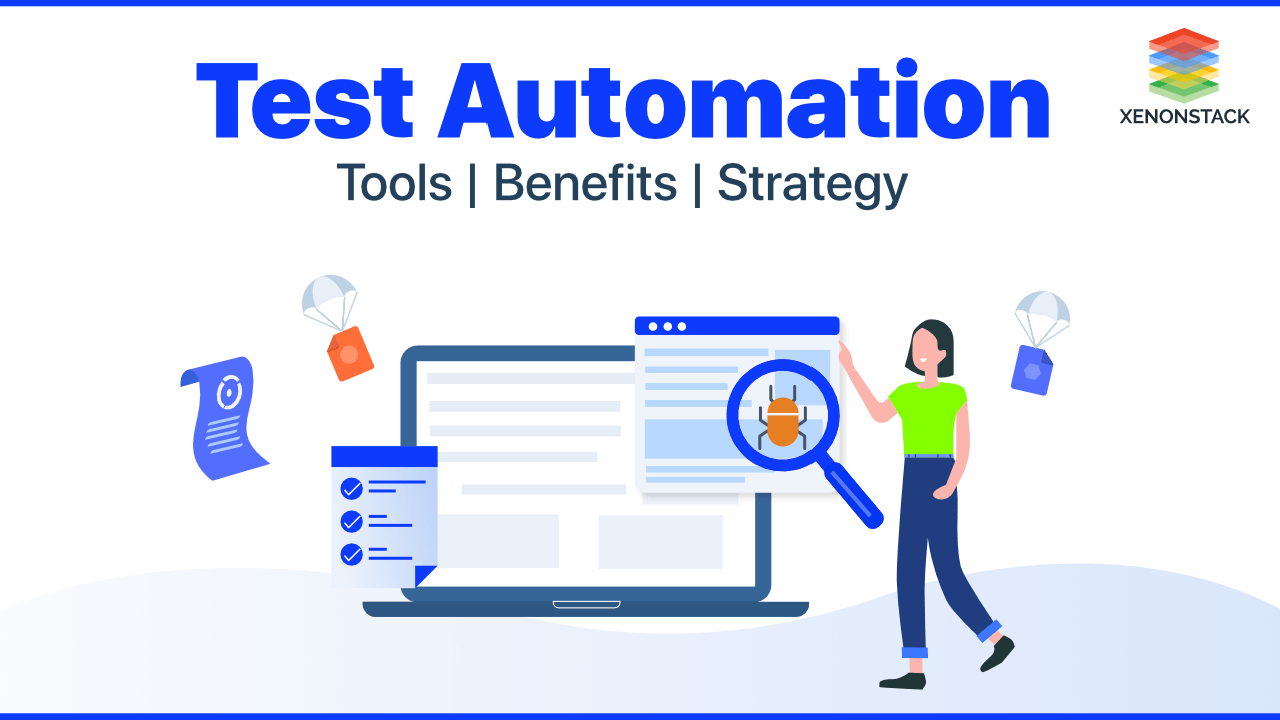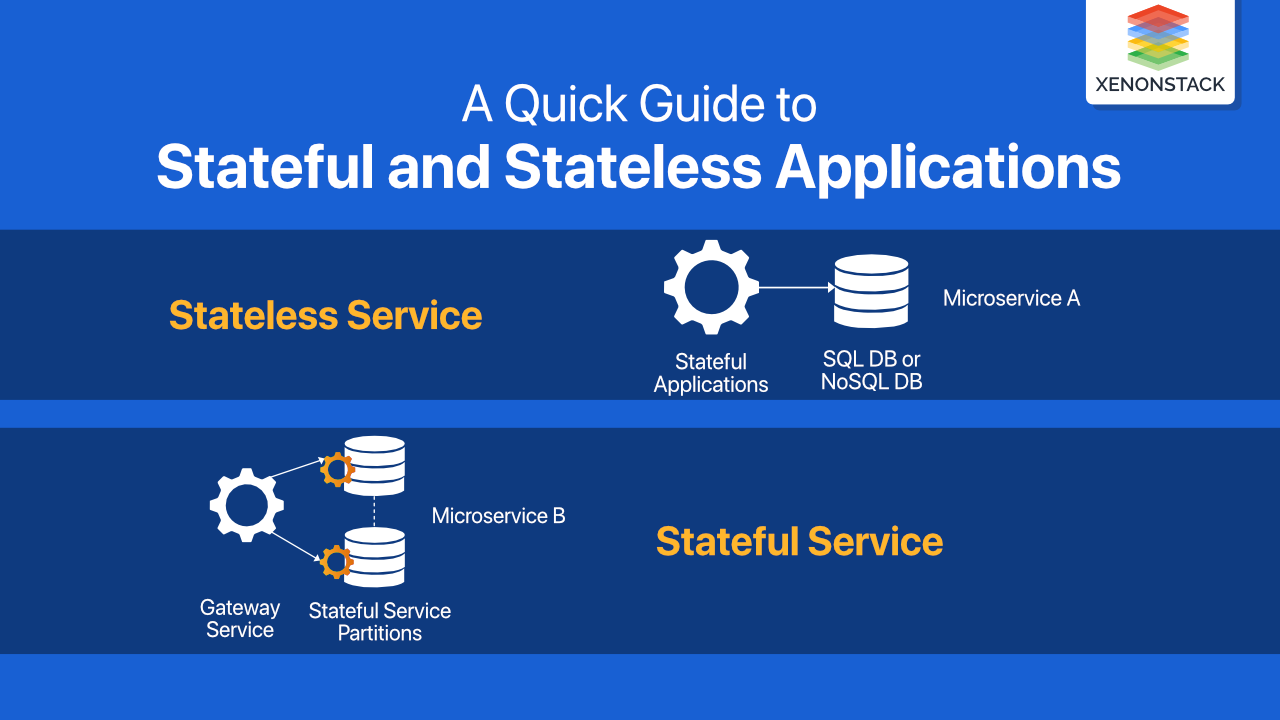
Introduction to Automation Testing
In the world of software, there are two types of testing: manual and automated. Manual testing, such as discovery and usability testing, is quite beneficial. Other types of testing, such as regression and functional testing, can be done manually, but it's wasteful practice for humans to repeat doing the same thing again and over. These kinds of repetitive tests are ideal candidates for Automation Testing.
Automation Testing automatically executes tests, manages test data, and analyses the results to improve software quality. It's essentially a quality-control measure, but its operations are necessary for the participation of the entire software development team. It compares actual test findings to expected or predicted outcomes. Your projects will be more efficient and have a shorter time to market if you use automated testing.
Although some types of testing, such as regression or functional testing, can be performed manually, the benefits of automating them outweigh the disadvantages. Automation testing is possible at any time of day. The programme is examined using scripted sequences. It then reports what it's discovered, which may be compared to data from previous tests. Automation engineers commonly use C#, JavaScript, and Ruby.
What is Automation Testing Framework?
A testing framework is a set of principles or guidelines for developing and designing test cases. A framework is a collection of procedures and technologies meant to assist quality assurance. There are six different automation testing frameworks, each with its architecture and set of pros and cons.
- Linear Automation Framework
- Modular Based Testing Framework
- Library Architecture Testing Framework
- Data-Driven Framework
- Keyword-Driven Framework
- Hybrid Testing Framework
Read the complete blog on Testing Automation Frameworks
What is Automation Testing Life Cycle?
Automation Testing is a basic testing procedure that includes all phases of the testing life cycle and different stages that include test readiness and automation execution. This entire cycle is referred to as the Test Automation Life Cycle. As we all know, every Software Testing must adhere to the Software Testing Life Cycle (STLC) to achieve the best software results. Similarly, automation must adhere to the Automation Testing Life Cycle (ATLC) to achieve the best automation framework and results.
The Automation Testing Life Cycle (ATLC) enables the Automation team to determine the most important aspects of automation projects in advance, preventing errors early in the automation process.
The various phases of Test Automation LifeCycle are:
- Deciding the scope of Test Automation
- Selecting The Right Automation Tool
- Set up Test Environment
- Test Script Execution
- Test Analysis and Generation of Test Results and Reports
Stage 1: Deciding the scope of Test Automation:
It is the initial stage of the automation testing life cycle, and its goal is to determine whether automation is feasible. When evaluating the feasibility, every factor should be taken into account.
It is necessary to distinguish between application components that can be automated and those that cannot. The cost of the automation technology, the size of the testing team, and competence in the automation process must all be identified and taken into account. Before beginning automation testing, do feasibility assessments, such as test case automation.
Stage 2: Selecting The Right Automation Tool
Because automation testing is strongly dependent on the tool used, choosing the suitable testing device is a fundamental stage in the automation testing life cycle. The flexibility and intuitiveness of the team using the automation tool are essential factors to consider. The test engineer should create and evaluate the requirements for an automation tool. The test engineer's various criteria should then evaluate the testing employees. Plan + Design + Strategy
It is the most crucial step of the automation testing life cycle methodology since it specifies how to approach and achieve the Automation Testing goal. The first and most crucial step in the Automation Testing Life Cycle's Test Strategy phase is to choose a Automation Testing framework.
The testing team establishes the testing standards and guidelines and the software, hardware, and network infrastructure that will be used in the testing environment. It also establishes a preliminary testing schedule, data needs for the test and error tracking system, a tracking tool, and a technique for controlling the test's setup and staging environment.
Stage 3: Set up Test Environment
Setting up a machine or a remote machine where test scripts will be executed is part of the Automation Testing Life Cycle phase. The environment setup process requires careful planning; you must ensure that your test coverage is maximized across as many different scenarios as possible. The test team is responsible for scheduling and tracking environment set up operations, installing test environment software, network resources, and hardware, refining test databases and developing testbed and environment setup scripts. Some of the most critical aspects of the test environment to consider are as follows:
- Configuration and license for the Test Data
- Multiple Browser Automation Framework Tool
- Whether it's for staging or live, it is crucial to choose the right location.
Stage 4: Test Script Execution
It's time to run the test script after setting up the test environment. As a result, executing all test scripts is the focus of stage 4. It is critical to ensure that all test cases are executed correctly. When the test content is appropriately developed, it should be implemented by keeping the following in mind:
- As suggested by the experiment, the test content should include all practical viewpoints.
- It's critical to test scripts under various scenarios and at various stages.
- To save time and effort, batch execution can be used.
- If an error causes non-fulfilment, file a bug report.
Step 5: Test Analysis and Generation of Test Results and Reports
After all the tests are completed, the team analyses and finds certain functionality and components that have several issues in test reports. Additional tests or procedures may be required as a result of the analysis. Test results can be analyzed to see if the test scripts or run procedures had any errors.
This is the final stage of the automation testing life cycle, and at this point, all test reports must be shared with clients or stakeholders.
What are the Automation Testing Benefits?
Here is the complete list of benefits of Automation Testing for a productive team.
- Faster Feedback Cycle
- Higher Test Coverage
- Increased Productivity
- Improved Accuracy
- High App Quality and Performance
- Less Stress on QA Team
- Better Insights
- Reusability of Test Suite
Faster Feedback Cycle
Feedback for newly built features can take a long time without test automation. Automation Testing allows you to shorten the feedback cycle and provide faster validation for different product development stages. Test automation is hugely valuable because it aids in detecting faults or errors during the development stage, enhancing the team's efficiency.
Higher Test Coverage
Manual testing limits the number of tests that can be validated. Because of automation, you may spend more time writing new tests and adding them to your automated test suite. This increases the test coverage of your product, guaranteeing that more capabilities are thoroughly tested and, as a result, a higher-quality application. Furthermore, automated testing allows developers to create more detailed tests covering a more comprehensive range of scenarios.
Increased Productivity
Because automated testing doesn't require human participation while running, you can test your app anytime in the time. Because automated tests may repeatedly run independently, software developers and quality assurance specialists can spend less time testing. Automation allows your engineers to focus on more critical activities. Fixing existing app functionality isn't as thrilling as adding new features, as we all know.
Improved Accuracy
Even the most skilled testing engineer will make mistakes during manual testing. Faults can happen, especially when evaluating a complex use case. On the other hand, automated tests can execute tests with 100 per cent accuracy because they consistently produce the same result.
High App Quality and Performance
Your app's high quality and performance will be ensured through automatic testing. It enables you to run hundreds of automated test cases simultaneously, allowing you to test your app across various platforms and devices rapidly. Go with cloud-based device clusters if you want to get the most out of test parallelism and concurrency. They can help you with all of the necessary OS and hardware configurations.
Less Stress on QA Team
Your QA team will be able to spend more time on tasks other than manual testing if you use an automated testing technique. Aside from that, once the repetitive portion of manual testing is removed, the job description of a QA engineer becomes more interesting.
Better Insights
Automated testing provides more information than manual testing when specific tests fail. Automated software testing not only displays the application's memory contents, data tables, file contents, and other internal programme states. Additionally, it shows you the memory contents, data tables, file contents, and other internal programme states. This helps the developers figure out what went wrong.
Reusability of Test Suite
Building your automated test suite can be difficult initially. Reusing tests for new use cases or other projects is a breeze once you've defined your suite. It's a significant bonus that you can rapidly attach another project to your automated test suite.
You've already mastered the setup of an automated test suite and all associated tools, such as the continuous integration (CI) pipeline. As a result, you may quickly apply what you've learned to build up test automation for a new project.
What are the Automation Testing implementation Challenges?
We can speed up the software validation process and increase testing coverage using automated testing. However, implementing test automation for applications under test is hugely problematic. Without conquering these obstacles, testers may confront plenty of nightmares that could lead to the failure of software automated testing.
High implementation costs
Most of us agree that automated regression testing is critical and valuable in most Agile environments when it comes to testing automation.
However, when it comes to the price, we have a lot of reservations. In reality, the earliest stages of test automation are frequently costly. Analyze, create, and build a test automation framework, libraries, or reusable functions, among other things.
Licensing expenses, facilitation charges, and operating costs such as hardware and software must all be included in some circumstances.
Selecting a Proper Testing Approach
Automation tests necessitate the appropriate technology for script creation and the application of the proper testing methodology. For test automation engineers, this is one of the most challenging tasks. Testers must discover an acceptable test automation approach from a technical standpoint. As a result, how can automation test suites be designed and implemented to identify these changes appropriately and maintain them up-to-date quickly and with minimal maintenance effort?
It's great to have a test automation solution that can detect these flaws and update and re-validate the test without the need for human interaction.
Reaching complete test coverage.
There's always a danger that any testing will miss anything. This is particularly true in the case of automated testing. Several elements may have been overlooked because they were not considered in the model. Track data that can identify trends of problems linked with insufficient testing coverage, such as a high defect breakout rate, to avoid these blind spots. This analysis can also help you focus and track your progress over time. An integrated, end-to-end analytics solution can track performance inside and outside of testing and bring key elements to the foreground.
Effective Communicating and Collaborating in Team
This may be a problem not only for test automation teams, but also for manual testing teams. However, test automation is more complex than manual testing since it necessitates more communication and collaboration among the automation team. To get the entire team involved in creating test automation objectives and setting goals, we need to put in a lot of effort in terms of communication and present a lot of evidence, historical data, and even a proof of concept. Furthermore, we must keep the entire team on the same page to have specific purposes and goals. Unlike manual testers, automation testers discuss the plan, scope, and timeline with developers, business analysts, and project managers and what should and should not be automated.
What are the Test Automation Best Practices?
Here is the list of test automation best practices –
- Divide Task Based on Skills
- Test Automation Ownership Is Collective
- Use Data-Driven Tests
- Keep Records for Better Debugging
- Early and Frequent Testing
- Prioritize Detailed & Quality Test Reporting
Divide Task Based on Skills
Assign tasks to employees depending on their technical competence while generating test suites and cases. If the test needs the use of a proprietary tool, for example, it will be possible for team members of diverse skill levels to construct test scripts with relative ease. This becomes more challenging if the team decides to use open-source technology. In this instance, designing automated tests will necessitate the assistance of someone familiar with the tool's coding.
Test Automation Ownership Is Collective
One of the most common blunders made by most software firms is assigning a single engineer to handle automation. Most of the time, the rest of the team has no idea what's going on. The team's collective knowledge is critical to the success of test automation. Shared ownership also allows expert automation testers to pass on their knowledge and skills to others. This way, everyone on the team is aware of the process and can participate to their full potential.
Use Data-Driven Tests
When several data points must be examined simultaneously, a manual test is no longer an option. Any human would be unable to conduct quick and error-free tests due to the high amount of data and the number of variables.
Implementing data-driven automated tests simplifies the process by reducing it to a single test and a single data set that can then be used to work through a variety of data parameters.
Keep Records for Better Debugging
When tests fail, it's critical to keep track of the failure, as well as written and video logs of the failed scenario, so that testers can figure out why the test failed. If at all possible, use a testing tool that has a built-in mechanism for saving browser screenshots at each test stage. This makes it simple to pinpoint the point where the problem occurs.
Early and Frequent Testing
Start automation testing early in the sprint development lifecycle to get the most out of it. Test as often as necessary. As a result, testers can begin finding and resolving errors as soon as they emerge. Doing so saves a lot of time and money compared to fixing errors later in the development process or even in production.
Prioritize Detailed & Quality Test Reporting
QA teams should be able to spend less time verifying test findings thanks to automation. Set up a proper reporting infrastructure with the appropriate tools to provide detailed, high-quality reports for each test. Group tests according to parameters such as type, tagging functionality, results, and so on, if possible.
What is Automation Testing in the Cloud?
Cloud-based test automation is a software development method that uses cloud technologies to accelerate the testing and delivery of software. This is accomplished by spinning up' test environments on-demand, allowing your software development teams to continue developing, testing, and releasing digital products without having to provide new infrastructure. Simply said, more test environments equal faster testing. Teams that wish to shorten testing cycles and boost release velocity should use cloud-based test automation. It has obvious advantages, but it can also present some difficulties. Whether you go totally to the cloud, combine it with your existing infrastructure, or keep all testing on-premises, it should be part of your software development plan.
Cloud-based test automation has several advantages.
- Cost-Effective
- Always-On, Always Available, and Always Reliable
- Increase global coverage and productivity from any location
- Virtualization's Advantages
- Disaster Recovery, Audit Ready
Cost-Effective
Cloud-based solutions offer lower hardware requirements and do not require expensive per-seat licenses. This means that capital expenditures and depreciation costs are kept to a minimum. Test components can be reused to a large extent with cloud-based solutions. They're highly scalable, making them excellent for load and performance testing. Pay as you go gives you the flexibility to scale up and down your cloud usage as your testing needs change.
Always-On, Always Available, and Always Reliable
Teams must have access to their test environment and automation assets from their local PCs, IDEs, CI servers, and any other schedulers. This enables them to reliably start a testing cycle that may run from beginning to end, regardless of whether the team is located in the United States or elsewhere.
Increase global coverage and productivity from any location
Teams can develop and test software from anywhere globally using a cloud-based solution. Connecting your test environment to a global enterprise cloud improves test coverage, improves user experience testing, and allows distributed teams to continue working regardless of their location or market conditions
Virtualization's Advantages
Cloud-based tools bring in virtualization benefits. They allow businesses to make the best use of their resources, resulting in more flexible and efficient testing. Virtualization benefits resource sharing while lowering capital costs as applications get more complex.
Disaster Recovery, Audit Ready
Cloud test automation allows for more detailed activity tracking. It enables you to store more extensive data sets. In addition, the cloud can help with disaster recovery. Executives can save a lot of time and money by having their whole infrastructure offered as a service in a secure facility that is monitored 24 hours a day, seven days a week. For example, it also helps firms prepare for audits by restoring historic data.
What are the best Test Automation Tools?
Some of the popularly used tools are:
- SOASTA CloudTest
- BlazeMeter
- AppPerfect
- Nessus
- Jenkins Dev@Cloud
- Xamarin Test Cloud
- App Thwack
SOASTA CloudTest
SOASTA CloudTest is a popular tool among the cloud software testing Community. You may use this tool to do functional and performance testing on mobile and web applications. SOASTA CloudTest is an excellent choice for specialists because of its ability to give real-time insights and seamless integration.
BlazeMeter
BlazeMeter is another cloud-based testing solution that can generate many test cases. It's designed primarily for mobile application load testing and end-to-end performance testing. It can also provide you with the advantages of real-time monitoring and reporting test results.
AppPerfect
AppPerfect is one of the tools on the list that is a multi-purpose tool that can be used by testers and developers and big data operations. AppPerfect sells web, load, and security testing through its cloud menu, which integrates Salesforce features.
Nessus
Nessus is a cloud-based testing tool that assists in identifying potential vulnerabilities and missing fixes in firewalls, devices, cloud infrastructure, and other systems. It detects malware, viruses, and backdoors, among other risks. In the healthcare and finance industries, Nessus is widely used. It aids in the security of applications by delivering valuable audit results.
Jenkins Dev@Cloud
It enables cloud development, continuous deployment, and integration. It enables development in a variety of languages and deployment to a variety of services. It offers a variety of mobile development tools and the ability to connect to current systems via the cloud securely. Third-party systems such as Google App Engine, Cloud Foundry, and AWS Elastic Beanstalk are incorporated.
Xamarin Test Cloud
The Xamarin Test Cloud is a user interface acceptability testing solution that is mainly used for mobile app testing. You can run the tests on various genuine mobile devices using the cloud-based tool. It is well-known for delivering precise outcomes. You may easily integrate the tool into automated builds if you desire continuous integration.
App Thwack
App Thwack is the tool to utilize when you need precision and accuracy in your testing. It allows online applications, as well as Android and iOS apps, to be tested. It is one of the most excellent cloud-based testing tools since it is compatible with automation systems such as UI Automation, Calabash, Robotium, and other famous platforms. It also allows for customized testing and supports multiple platforms.
Conclusion
Test Automation is a software testing technique that executes a test case suite using special automated testing software tools. It is the most effective way to improve software testing effectiveness, test coverage, and execution speed.
The right automation tool, testing process, and team are all critical factors in the success of automation. For successful testing, manual and automated methods must be used in parallel. Test automation aids in the improvement of quality while increasing speed. Most tests should be unit tests, followed by service tests, and finally UI tests.
Embracing test automation to realize the full potential of DevOps will reduce bottlenecks and increase efficiency, directly impacting employee and customer satisfaction and, ultimately, the bottom line.
Read Next
- Learn more about User Acceptance Testing (UAT) Types And Best Practices
- Know about Big Data Testing Best Practices And Its Implementation
- Read about Test Driven Development (TDD) Tools And Agile Process


